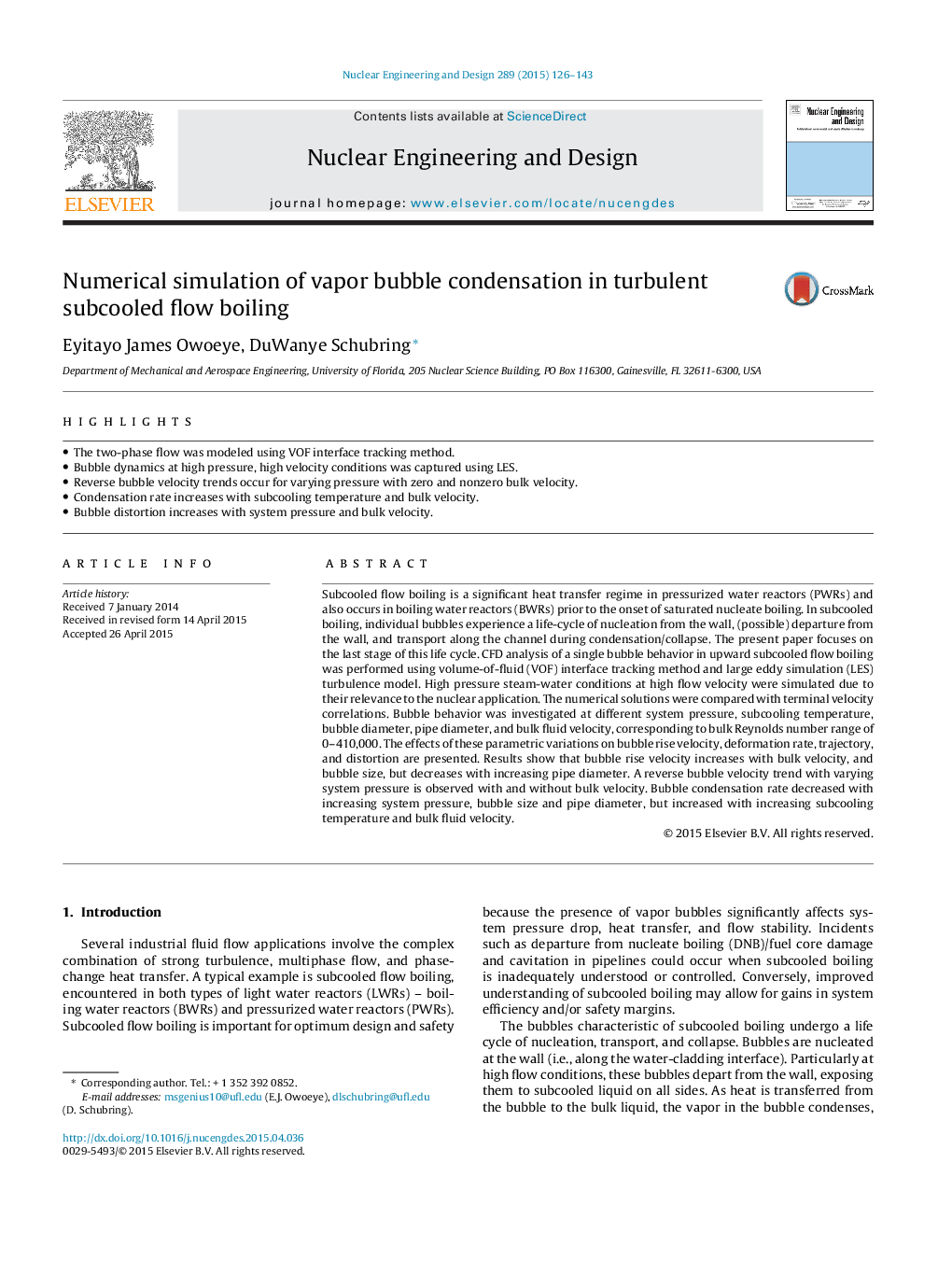| کد مقاله | کد نشریه | سال انتشار | مقاله انگلیسی | نسخه تمام متن |
|---|---|---|---|---|
| 296144 | 511712 | 2015 | 18 صفحه PDF | دانلود رایگان |
• The two-phase flow was modeled using VOF interface tracking method.
• Bubble dynamics at high pressure, high velocity conditions was captured using LES.
• Reverse bubble velocity trends occur for varying pressure with zero and nonzero bulk velocity.
• Condensation rate increases with subcooling temperature and bulk velocity.
• Bubble distortion increases with system pressure and bulk velocity.
Subcooled flow boiling is a significant heat transfer regime in pressurized water reactors (PWRs) and also occurs in boiling water reactors (BWRs) prior to the onset of saturated nucleate boiling. In subcooled boiling, individual bubbles experience a life-cycle of nucleation from the wall, (possible) departure from the wall, and transport along the channel during condensation/collapse. The present paper focuses on the last stage of this life cycle. CFD analysis of a single bubble behavior in upward subcooled flow boiling was performed using volume-of-fluid (VOF) interface tracking method and large eddy simulation (LES) turbulence model. High pressure steam-water conditions at high flow velocity were simulated due to their relevance to the nuclear application. The numerical solutions were compared with terminal velocity correlations. Bubble behavior was investigated at different system pressure, subcooling temperature, bubble diameter, pipe diameter, and bulk fluid velocity, corresponding to bulk Reynolds number range of 0–410,000. The effects of these parametric variations on bubble rise velocity, deformation rate, trajectory, and distortion are presented. Results show that bubble rise velocity increases with bulk velocity, and bubble size, but decreases with increasing pipe diameter. A reverse bubble velocity trend with varying system pressure is observed with and without bulk velocity. Bubble condensation rate decreased with increasing system pressure, bubble size and pipe diameter, but increased with increasing subcooling temperature and bulk fluid velocity.
Journal: Nuclear Engineering and Design - Volume 289, August 2015, Pages 126–143
